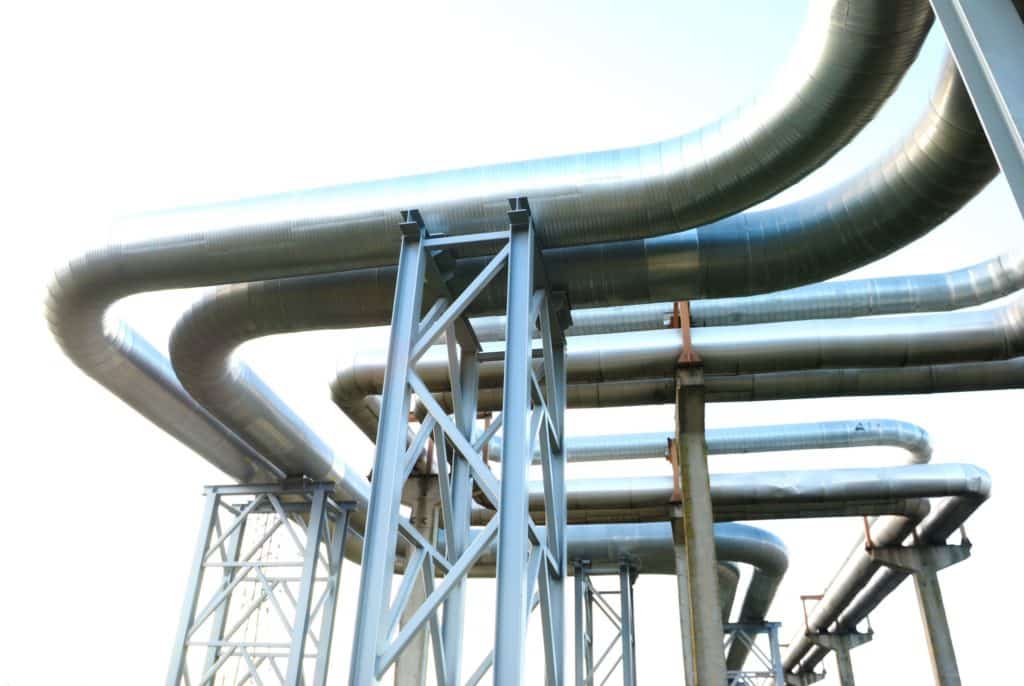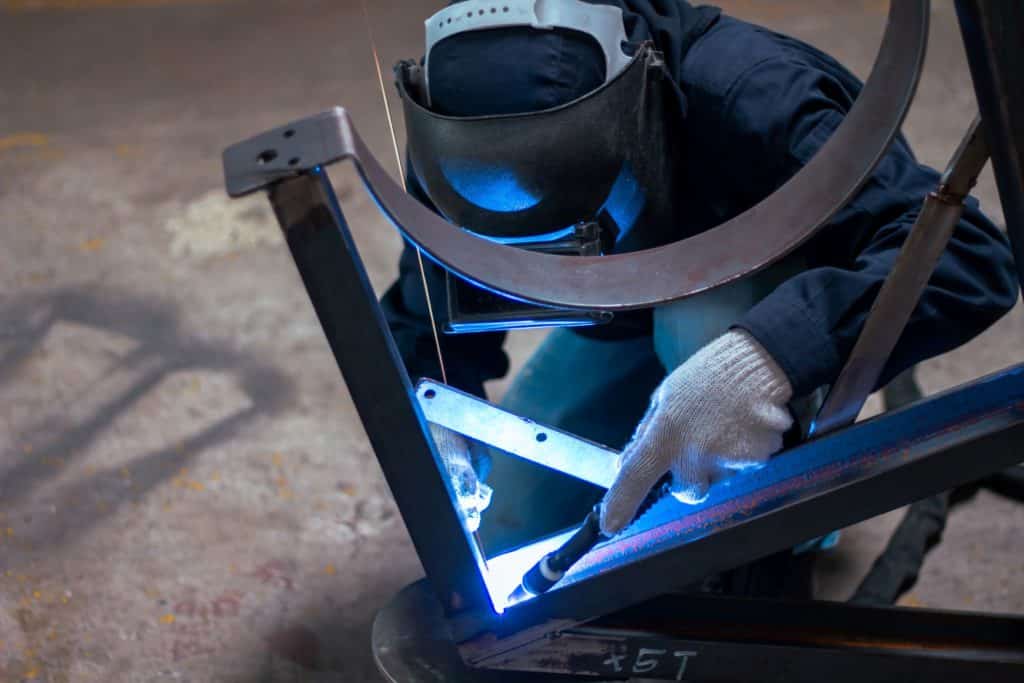Design Considerations for Pipe Stands
The piping system is an essential part of the hydrocarbon industry. Pipe support, also referred to as pipe stands or pipe racks, plays a crucial role in the overall function of the piping system. Pipe stands help carry the weight of the pipe by following a proper pipe span.
The success of any piping project depends on professional pipe stand engineering. It also requires accurate piping support materials and adherence to industry standards, such as the International Building Code (IBC).
Ideally, pipe supports help transmit piping loads generated by weight, temperature, or pressure from the pipe to supporting structures. This process requires expert piping knowledge, especially during the layout phase.
Keep reading to learn more about piping support. Also, check out Heartland Repair & Coatings piping process services and pipe stands.
How Pipe Support Works
Pipe support is instrumental in transferring material such as oil or gas from equipment to storage racks. However, storage racks should never be confused with pipe racks, even if they can accommodate extensive piping.
Pipe racks consist of transverse frames, also called pipe bents, supporting gravity loads and aiding maintenance access beneath the pipe rack.
The transverse pipe vents also feature fixed base columns and sometimes pinned base columns to enable supported piping to complete the lateral displacement.
A pipe support functions in four ways: acting as an anchor, guide, shock absorber, and supporting specified loads. Pipe supports used in high or low-temperature applications are typically made of insulation materials.
The overall pipe stand design configuration depends on the loading conditions plus the pipe rack location.
Types of Loads Needed in Pipe Stand Design
A few different pipe loads in pipe stand designs need to be accounted for. They include primary loads, sustained loads, and occasional loads.
Primary Loads
Typically, primary loads are steady load types like gravitational forces that act on the pipe. Here are some examples of these types of loads:
- Internal fluid pressure
- Pipe and fluid weight
- External pressure on the pipe
- Blown down forces
- Pressure waves caused by water, wind, seismic loads, and water or steam hammer effects
- Sustained Loads
- Sustained loads typically include deadweight and internal or external pressure.
Sustained Loads
Sustained loads typically include deadweight and internal or external pressure.
Deadweight: Deadweight is the overall piping support weight, including fluid, pipe fittings, valves, flanges, and other inline components. This type of sustained load remains constant throughout the pipe’s life cycle. The load leads to bending, which is associated with shear stresses. Deadweight loads act differently in horizontal and vertical pipes. Horizontal pipes should account for this load by fixing the pipe support on a regular span to prevent the pipe from sagging. Vertical pipes account for the load by adding adequate load in lug support within the upright portion.
Internal And External Pressure: A pipe support used to transport fluid undergoes internal and external pressure loads. Internal and external pressure causes axial and circumferential stress. You should account for this type of load during pipe material selection. You should also select only the highest quality materials since the material must withstand the stresses at various temperatures and pressure levels.
Occasional Loads
Occasional loads include wind, thermal expansion, and seismic stresses. When calculating occasional loads, winds and earthquakes should be considered, as they often act concurrently.
Wind Loads: Outdoor pipe systems or those located above specific elevations are usually exposed to weather elements like the wind. They should be designed to withstand extreme wind velocity during the plant’s operating lifespan. You can calculate wind force using wind pressure for various elevations.
Seismic Loads: Seismic load is a primary concept of earthquake engineering and entails applying earthquake-generated agitation to the piping system. It takes place at contact surfaces of the piping system with the ground or nearby structures.
Thermal Expansion Loads: More pipe support usually results in less stress generated. However, for thermal piping expansions, the opposite is true. Thermal expansion caused by environmental temperature or fluid restrained at equipment nozzles, anchors, and penetration points generates large thermal stresses.
Live Loads: Live loads are real-time loads often called imposed loads. Live loads are susceptible to change depending on time. The piping would experience a strong surge in the flow of fluid or pressure at one point, resulting in live load intensity. The live load includes pipe support weight, fluid weight, etc.
Earthquake loads: Earthquake loads cause movement of the piping system at the foundation level. These types of loads are internal forces caused by ground movement. During an earthquake, three perpendicular forces act in the piping support. Two horizontal forces and a single vertical force act in opposite directions due to the weight of the pipes. The vertical force has little impact on the piping system during an earthquake compared to the horizontal forces that cause movement to the pipes. You should consider these two horizontal forces in the initial design.

Design Criteria
The regulatory building code within the construction and hydrocarbon industries is the International Building Code (IBC)(ICC, 2018). This code applies to piping systems, buildings, and similar structures within the governing jurisdiction.
The structural design criteria are highlighted in the IBC Chapters 16 to 23. According to the American National Standards Institute (ANSI) specification, these design criteria adopt different industry standards. Here is how IBC applies to pipe supports:
- Most pipe support loads are described in ASCE 7 (ASCE, 2010d.
- Structural steel material references are highlighted in AISC 360 (AISC, 2010c).
- Requirements for most structural steel seismic are detailed in AISC 341 (AISC, 2010a) and AISC 358 (AISC, 2010b).
The IBC’s referenced industry standards address buildings and similar structures to a greater extent. Industry guidelines generally provide design criteria for other systems, such as pipe support. These guidelines serve to interpret each building code and referenced documents.
For pipe racks, other design criteria can be found in Process Industry Practices, PIP STC01015 (PIP, 2007), and ASCE guidelines for petrochemical facilities (ASCE, 2011).
Structural Fabrications That Can Take the Load
Pipe stands are a crucial element in the piping system that helps transfer the load from the equipment or pipe to the storage structure. The load may include the weight of the pipe and its components, plus internal contents such as fluid or gas. The main functions of pipe stands are to act as an anchor shock absorber and support various loads.
Pipe system fabrication requires expertise and compliance with IBC, ASCE, and similar industry standards. Heartland Repair & Coatings is an ASME-certified company specializing in pressure vessels, process piping, and structural fabrication, with more offerings on the way. Contact us to learn more today.
